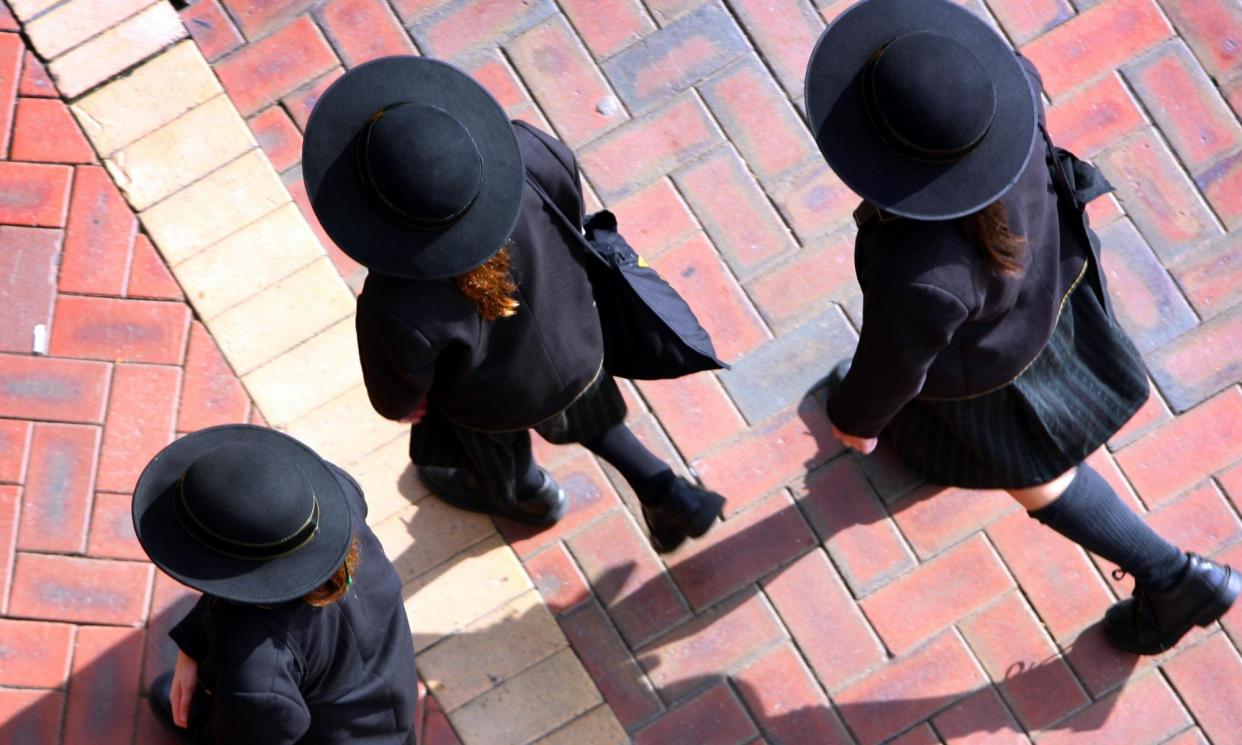Five private schools spent as much on new facilities in one year as 3,000 Australian public schools

Five elite private schools spent about the same amount of money on new facilities in 2021 as governments gave to more than half of Australia’s public schools for building works, new research has found.
A report released by the Australian Education Union (AEU) on Friday found the average annual capital spending per student in private schools in the decade to 2021 was more than double what was spent on public schools, equating to a $31.8bn divide.
Under the current arrangements, the commonwealth is responsible for the majority of non-government school funding (80%) with states and territories contributing the rest. The reverse is in place for public schools, with the states and territories responsible for the remaining 80% of funding.
Private schools also receive the bulk of their revenue from private contributions and fees but they are also topped up by governments, leading 98% of the sector to be overfunded when measured against the Schooling Resource Standard.
The union’s report highlights what education advocates have described as an infrastructure divide that they say must be urgently addressed.
It found $175.6m was spent across five private schools in Victoria and NSW in 2021 alone, which was in excess of what the federal and state or territory governments spent on capital works to upgrade 3,372 – or about half of all – public schools ($175.4m).
One prestigious Sydney boys school, Cranbrook, funnelled more into a new pool and expanded fitness and drama facilities ($63.5m) in 2021 than the NT and Tasmanian governments’ combined spending on new and upgraded schools.
Barker and Abbotsleigh Colleges in NSW spent more than $25m each, while Caulfield Grammar in Victoria spent $23.6m and Loreto Mandeville Hall spent $37.7m on capital works on 2021.
Barker College has since announced plans to spend an additional $150m building a performing arts and exam centre and an aquatic and tennis centre, while Loreto has a $130m redevelopment plan under way.
The union has released the report on the same day education ministers will meet in Melbourne for negotiations on the next bilateral school funding agreement.
Non-government schools have been allocated $1.25bn since 2017 in commonwealth funds as part of a capital grants program.
If the scheme remains in place, private schools will get almost $1bn in capital funding from the federal government over the next four years.
Only the NT and WA receive ongoing capital funding in public schools. The remaining jurisdictions are now sharing in a $216m building grants program that is spread across more than 6,700 public schools. The one-year fund was introduced by the Albanese government in the 2023 budget and is set to expire.
The AEU federal president, Correna Haythorpe, said state and territory governments had been lobbying for both capital and recurrent funding to be extended to public schools.
Related: ‘Dog’s breakfast’ philanthropy laws contributing to private school over-funding, report says
“Only 1.3% of public schools are fully funded compared to 98% of private schools and that inequity in recurrent funding is contributing to an unacceptable $30bn divide in spending on new and upgraded schools,” Haythorpe said.
Some private schools were able to spend on lavish facilities due to government overfunding while public schools were “increasingly left with demountable classrooms to cope with rising enrolments”, Haythorpe said.
The report also found more than $40m from a federal government capital grants program, designed to support private schools in disadvantaged areas, had instead been directed into wealthy private schools.
Already $250,000 had been funnelled to Loreto Normanhurst as part of the program, which charges fees of over $31,000 a year, while Newington College also received $150,000.
In total, commonwealth overfunding helped private schools divert $2.5bn of their recurrent income into capital projects between 2019 and 2021, the report said.
The AEU is calling for a $1.25bn injection into government schools to make up for the axing of capital funding to the public system by the former Coalition government in 2017, which the union says has led to a backlog of building maintenance.
The Greens leader, Adam Bandt, will back the demands at an address to union’s federal conference on Friday, saying the party is prepared to use its numbers if funding legislation is brought before parliament this year.
In November, the productivity commission released a draft report recommending ending the tax deductibility for donations to private school building funds.
Asked whether Labor would legislate capital funding for public schools and end tax deductibility for the private system, the education minister, Jason Clare, said his focus was working with states and territories to get all government schools to their “full and fair funding level”.
“Draft recommendations by the Productivity Commission are not government policy,” he said.
The convener of the public school advocacy group Save our Schools, Trevor Cobbold, said double standards were in place that ensured private school funding privileges were “sacrosanct”.


